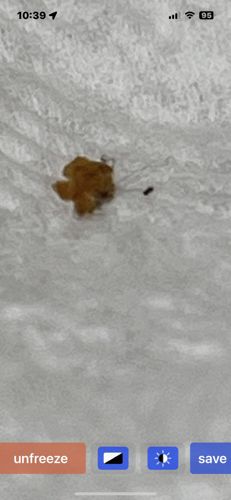Ant (likely a small species such as a Pharaoh Ant or Pavement Ant)
Scientific Name: Formicidae (family level, specific genus/species not discernible from image)
Order & Family: Hymenoptera, Formicidae
Size: Typically 1-5 mm for many common ant species, though some can be larger or smaller. The ant in the image appears to be at the smaller end of this range.

Natural Habitat
Highly variable depending on species, but common ants are found in a wide range of environments including urban, suburban, and natural areas. They often live in colonies underground, in wood, under rocks, or in wall voids indoors.
Diet & Feeding
Omnivorous. Ants feed on a variety of substances including sugars, proteins, fats, seeds, fungi, other insects (both living and dead), and honeydew produced by aphids.
Behavior Patterns
Ants are social insects living in highly organized colonies with a queen, workers, and sometimes soldiers. Workers forage for food, care for the young, and maintain the nest. They communicate using pheromone trails. Most species undergo complete metamorphosis (egg, larva, pupa, adult).
Risks & Benefits
Risks: Can be considered pests when they infest homes, contaminating food and sometimes causing structural damage (e.g., carpenter ants). Some species can bite or sting, though typically mild for common household ants. Benefits: Play important ecological roles as decomposers, aerating soil, predating on other insects, and dispersing seeds.
Identified on: 8/27/2025